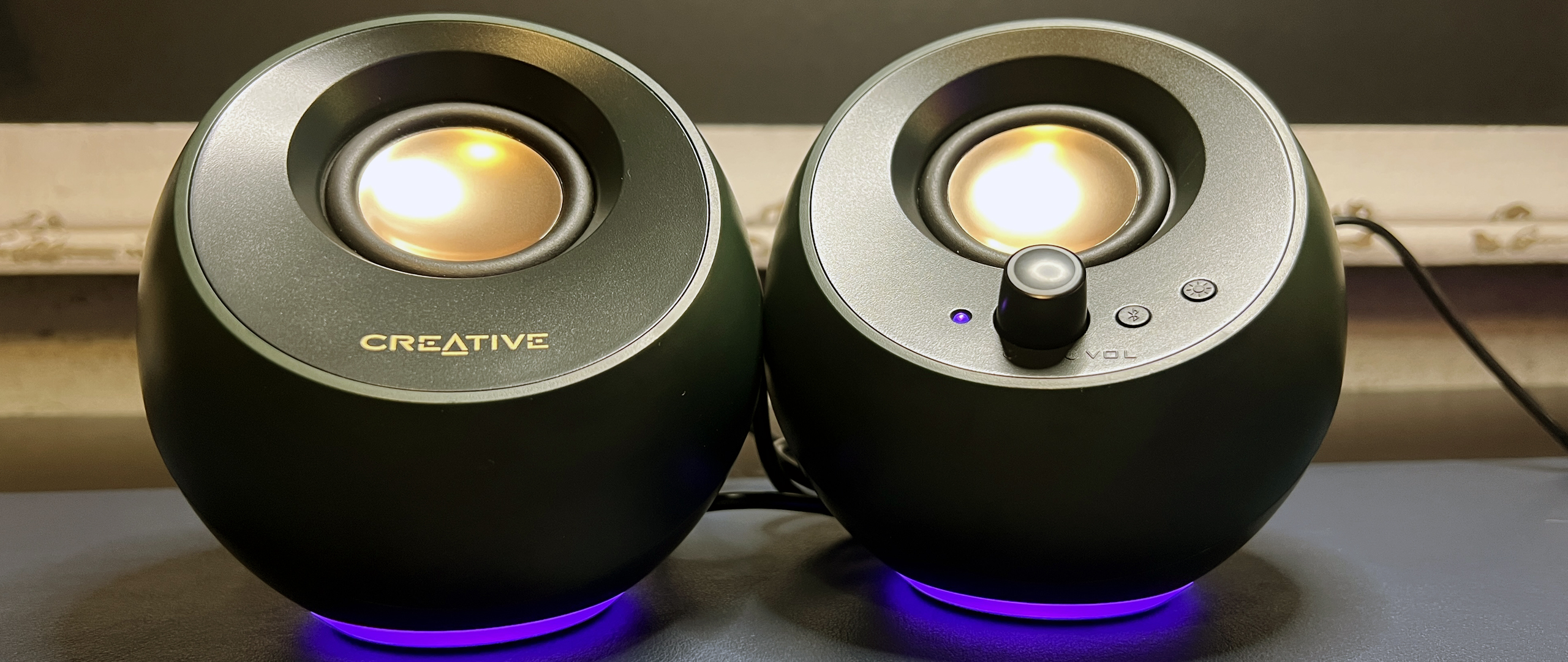
Creative’s Pebble desktop speakers have been a hit since they launched — because what’s not to like? They’re small and stylish and they pack a pretty impressive audible punch for just $25. So it’s not too surprising that Creative has released several variations on the original Pebbles, including the most recent launch: the Pebble Pro.
Priced at $59.99, the Pebble Pro is the most expensive Pebble so far — it’s $10 more than the Pebble Plus, which includes a subwoofer (the Pebble Pro does not include a subwoofer). The Pebble Pro is a 2.0 dual channel desktop speaker system with USB-C and Bluetooth 5.3 connectivity and built-in customizable RGB lighting.
It looks very similar to the other speakers in the Pebble line — compact, minimalist balls with elevated drivers that sit tilted up at a 45-degree angle. But the Pebble Pro is also packing some internal upgrades that give it the edge over its siblings — it has larger, re-engineered 2.25-inch drivers, and features Creative’s “BassFlex” technology and Clear Dialog audio processing.
The Pebble Pro also has a higher power output — 10W RMS (20W peak), with the option to kick it up to 30W RMS (60W peak) by plugging it into a 30W USB-PD power brick. For reference, the original Pebble had a 4.4W RMS, and subsequent iterations (Pebble V2, Pebble V3, Pebble Plus), 8W RMS.
The Pebble V3, which has the same 2.25-inch drivers (albeit, un-re-engineered) as the Pebble Pro, as well as Clear Dialog audio processing and USB-C and Bluetooth 5.0 connectivity, is currently on sale for $35 — nearly half the price. The Pebble Pro’s added RGB lighting isn’t really worth twice the price, but the BassFlex technology and the power upgrades just might be.
Design of the Pebble Pro
The Pebble Pro speakers are roughly the same size and shape as the rest of the Pebble lineup. Each pebble-shaped speaker measures 4.8 x 4.8 x 4.6 inches (123 x 123 x 118mm) and is housed in a plastic chassis.
The speakers are well-built and stylish-looking, though the chassis does attract fingerprints and was surprisingly difficult to smoothly wipe down (as you can see from my pictures). The Pebble Pro comes in one colorway — a dark, military-esque green (dubbed “Audio Green”) with dark gray faceplates and gold accents.
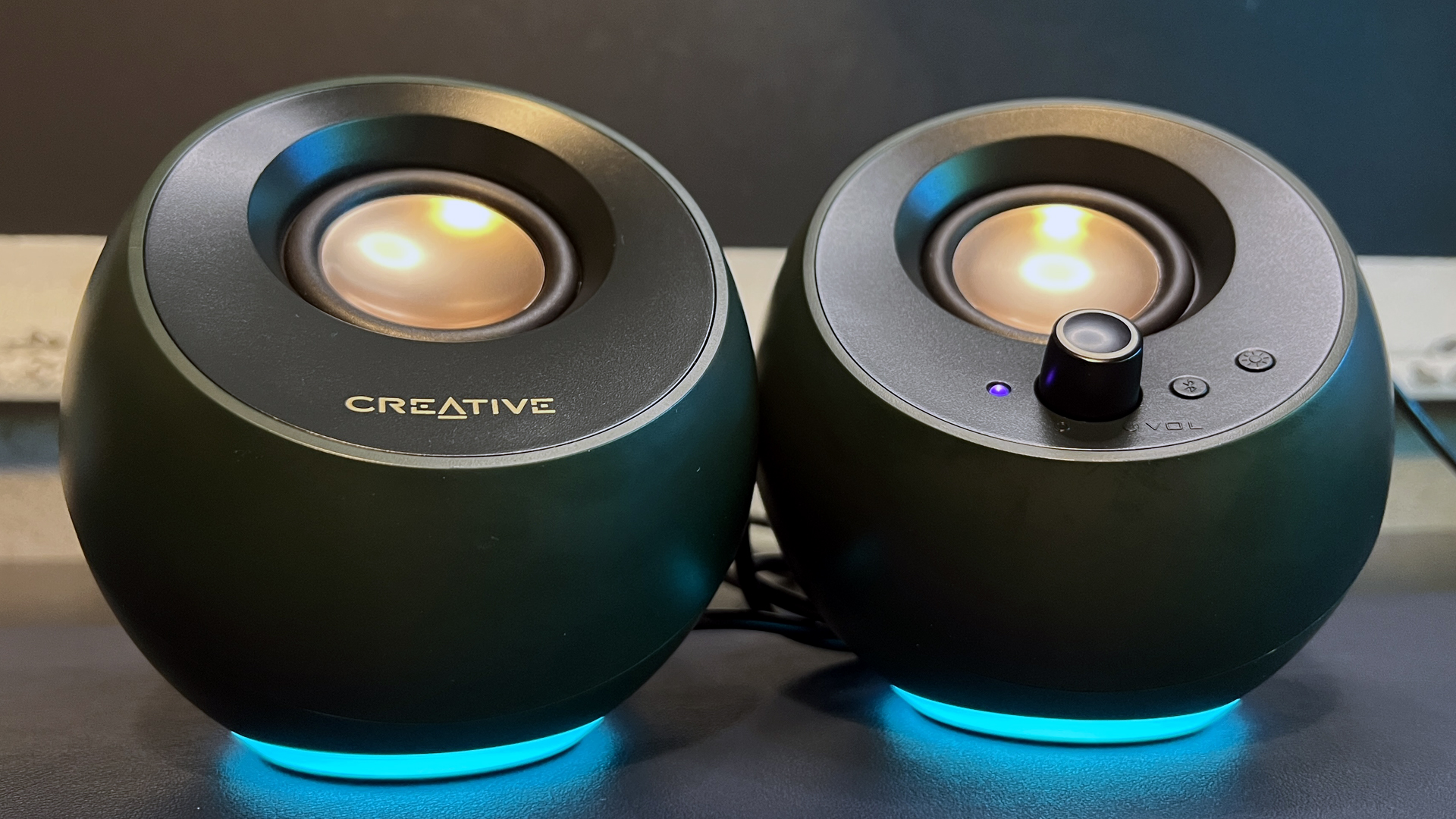
I’m not sure why Creative decided on this color as its sole option for the Pebble Pro, but I don’t... love it. I don’t have a problem with the color on its own — I like that it’s different from ever-present black or white while still being semi-neutral — but one of the Pebble Pro’s unique features is its built-in RGB lighting.
And I don’t think flashy, spectrum-cycling RGB really works with this shade of green (okay, or with the overall minimalist aesthetic of the Pebble line). I also don’t think there’s a single lighting color (other than white, which isn’t an option) that really works well with this shade of green, but maybe I’m overthinking this.
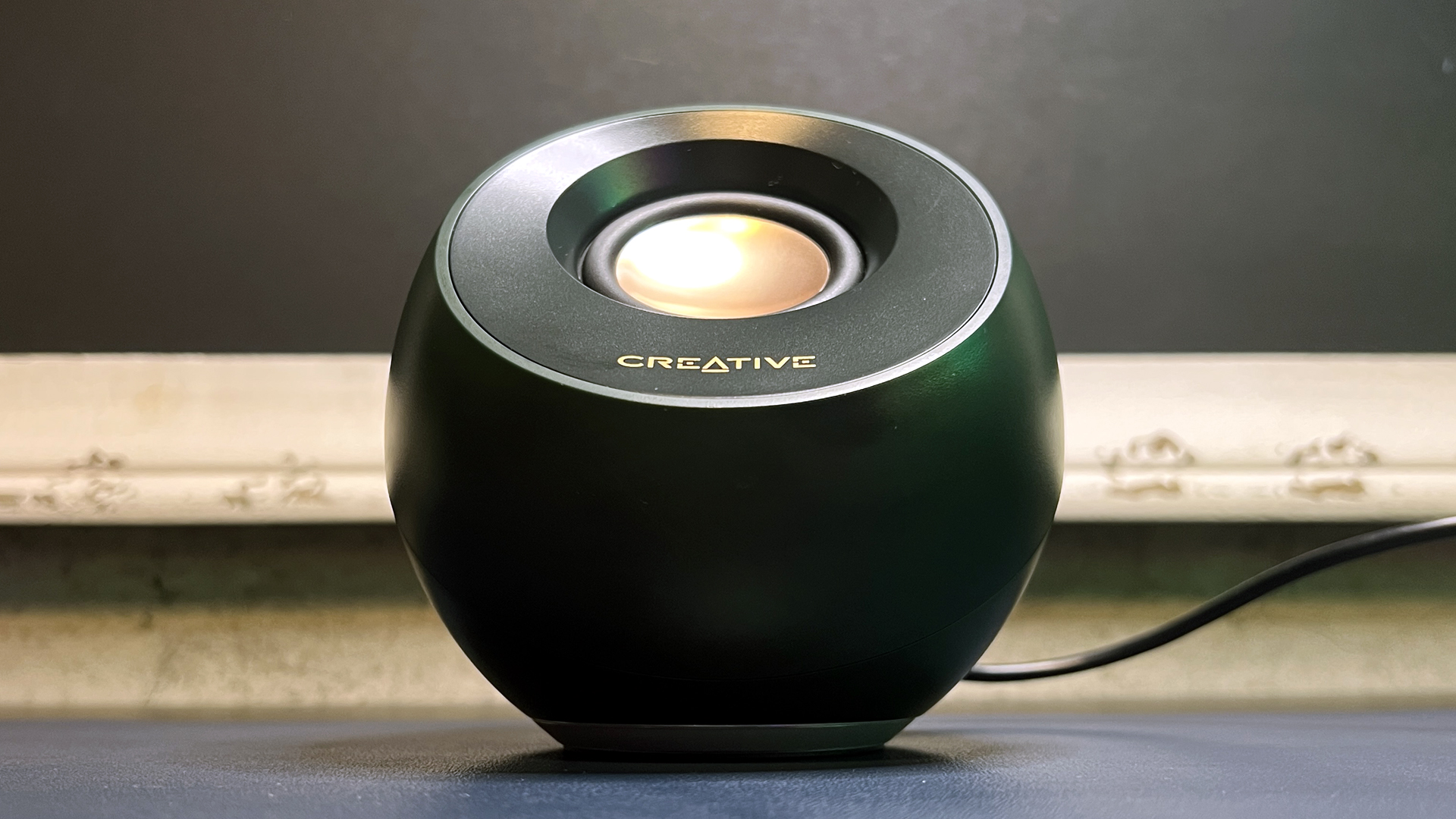
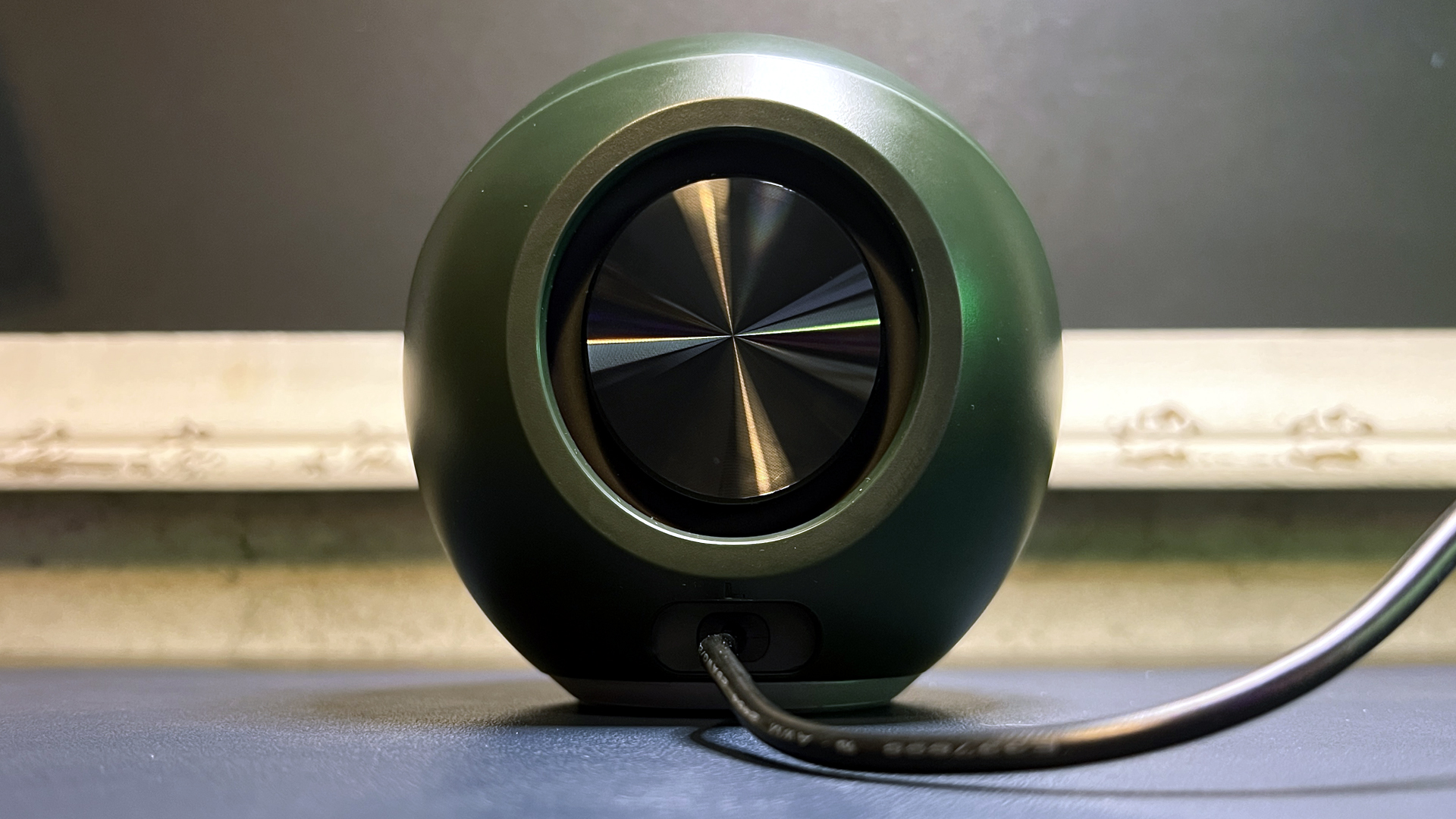
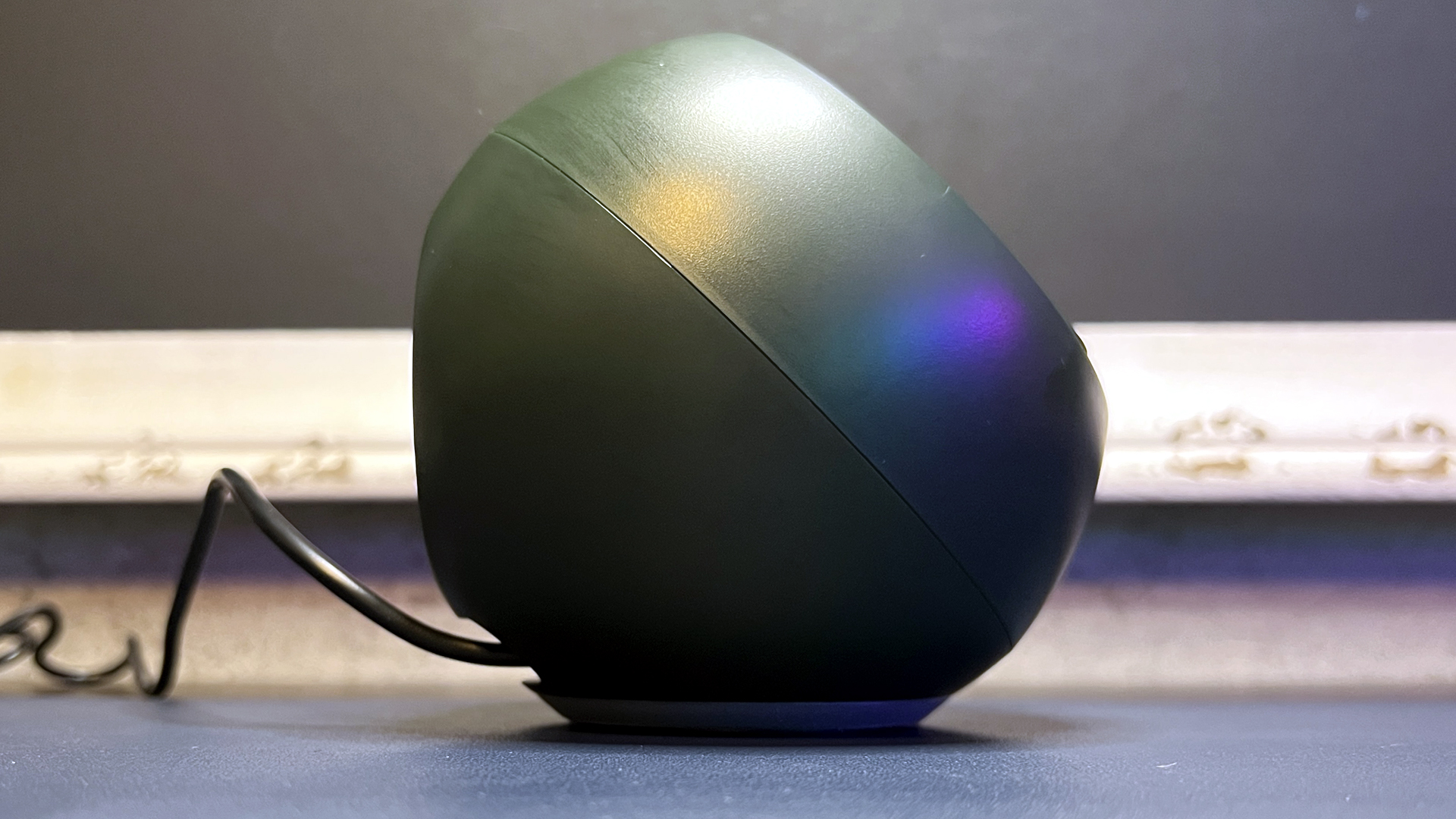
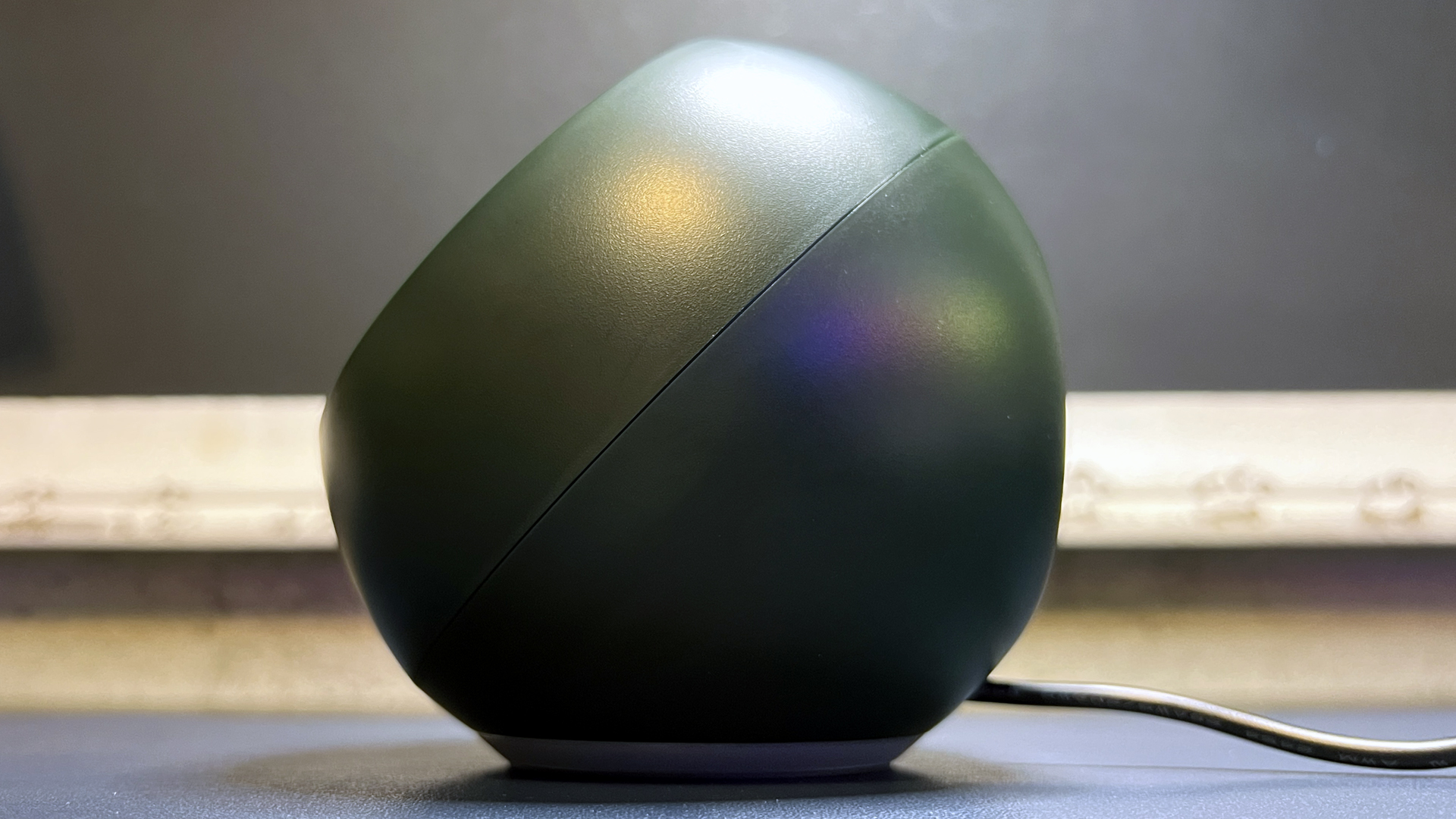
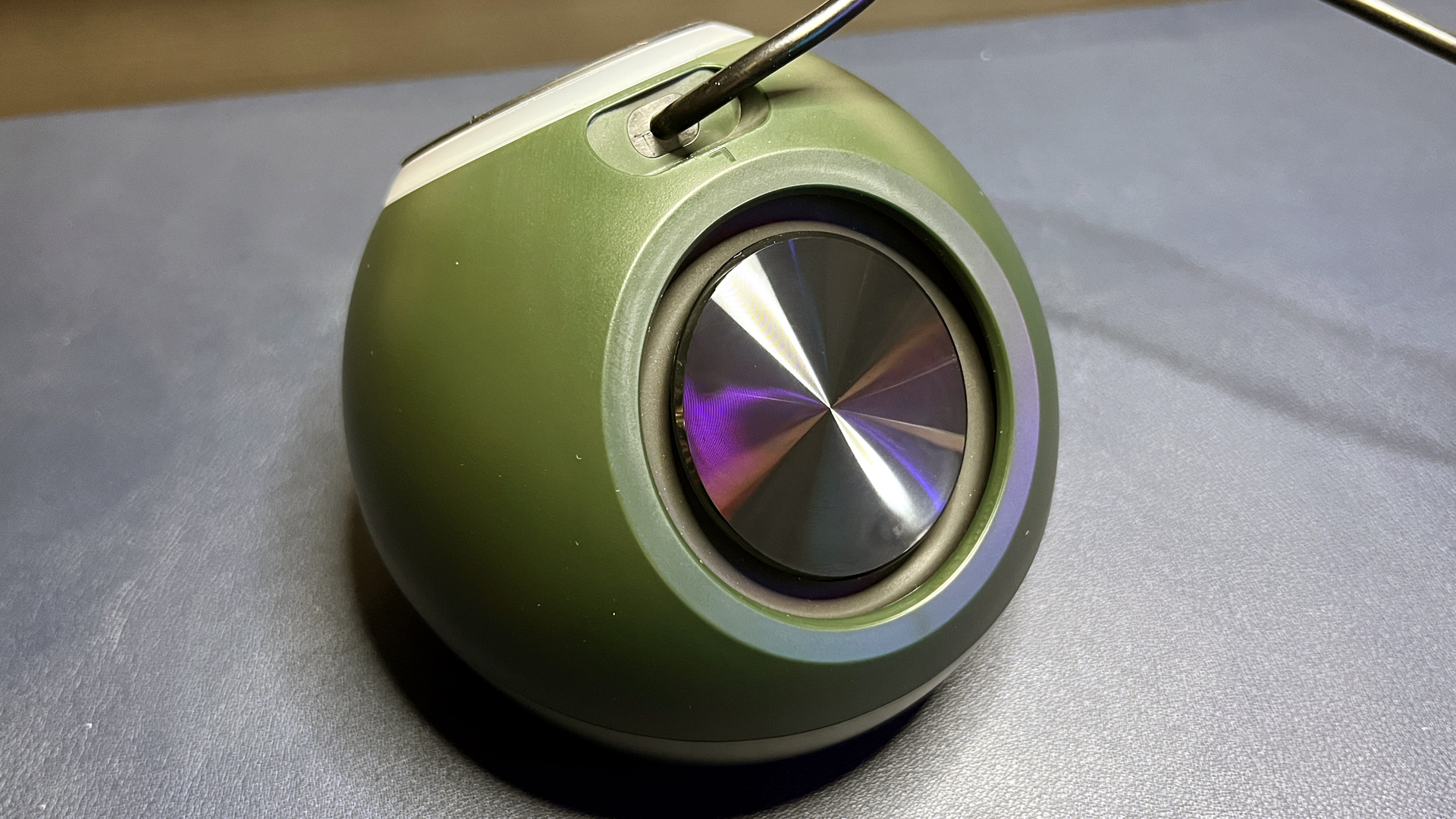
Both the left and right channels feature elevated drivers that are tilted upward at a 45-degree angle on the front and passive radiators on the back. The left speaker has Creative’s logo printed in gold along the bottom of its dark gray faceplate, while the right speaker has a volume knob and two buttons for connectivity and lighting. There’s an indicator light next to the volume knob that changes color to indicate input type (USB-C, Bluetooth, or AUX).
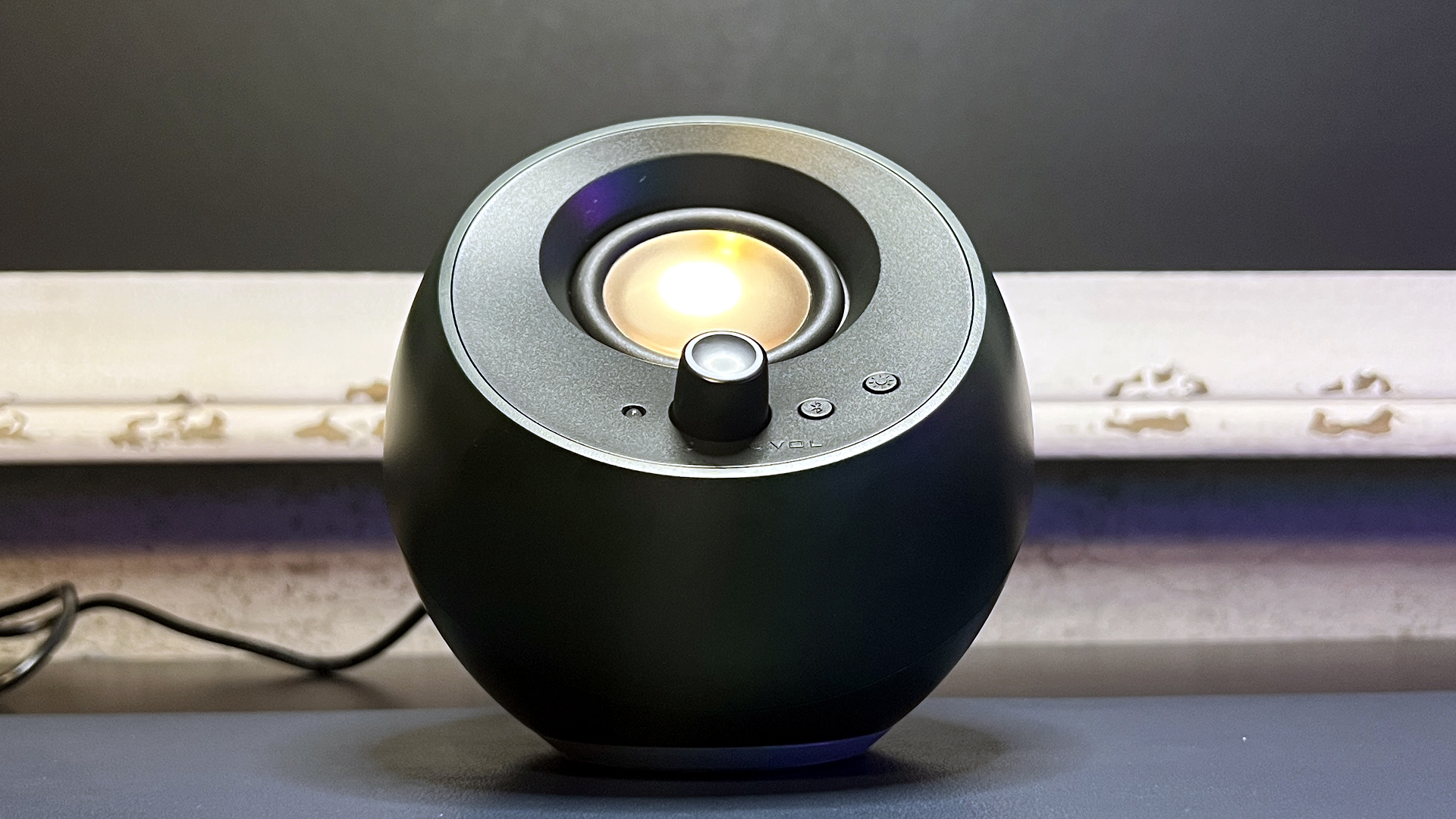
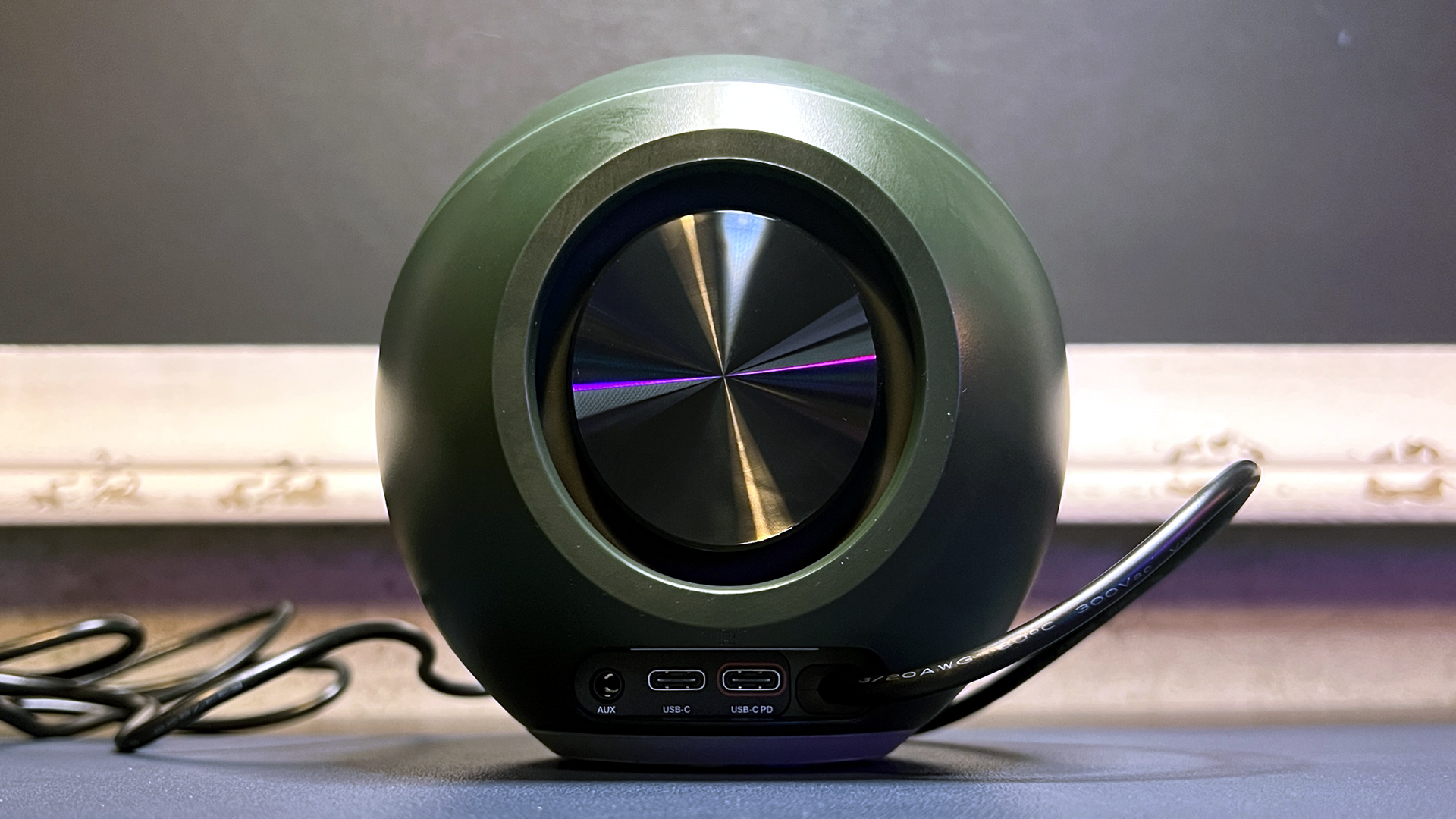
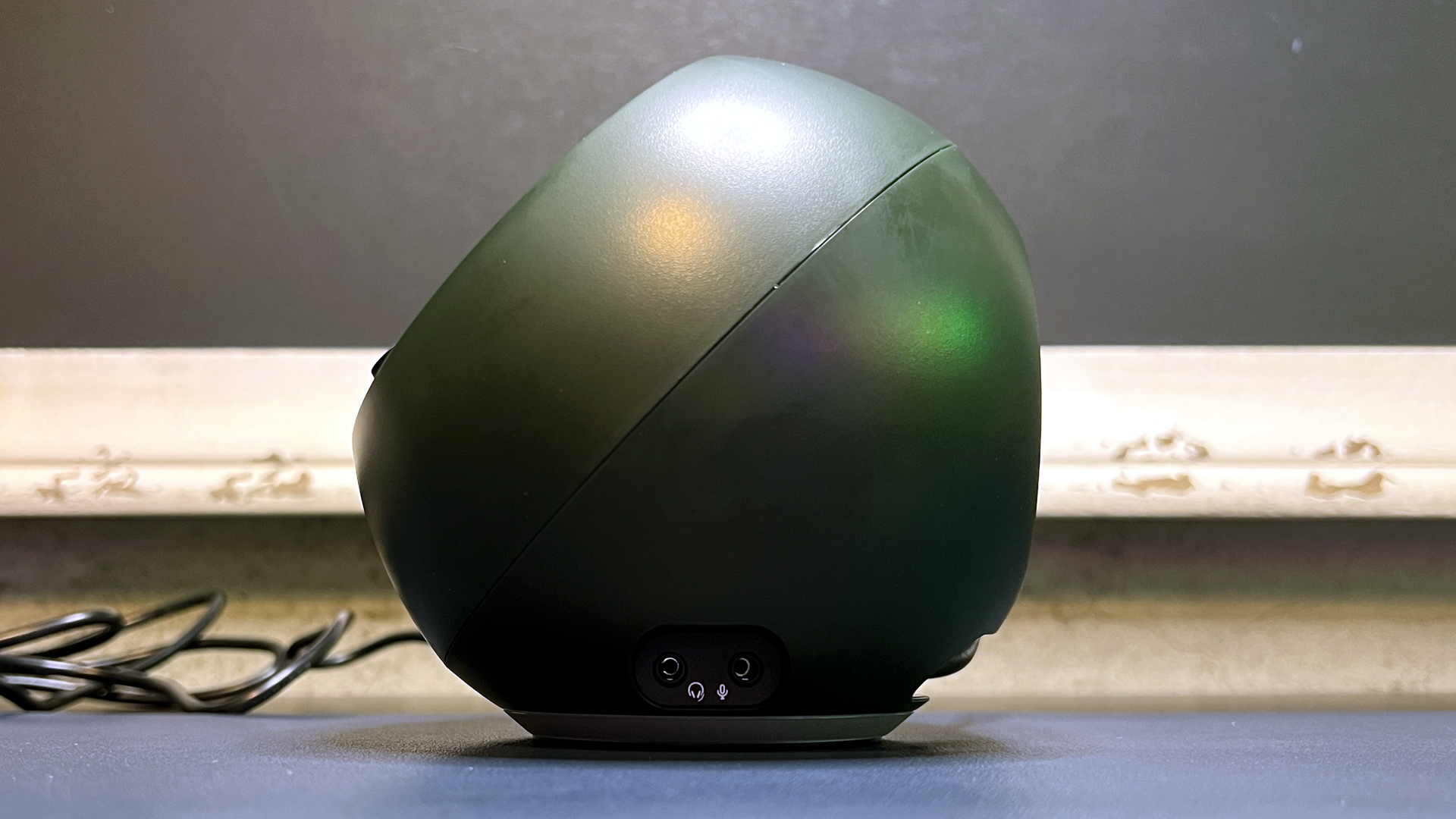

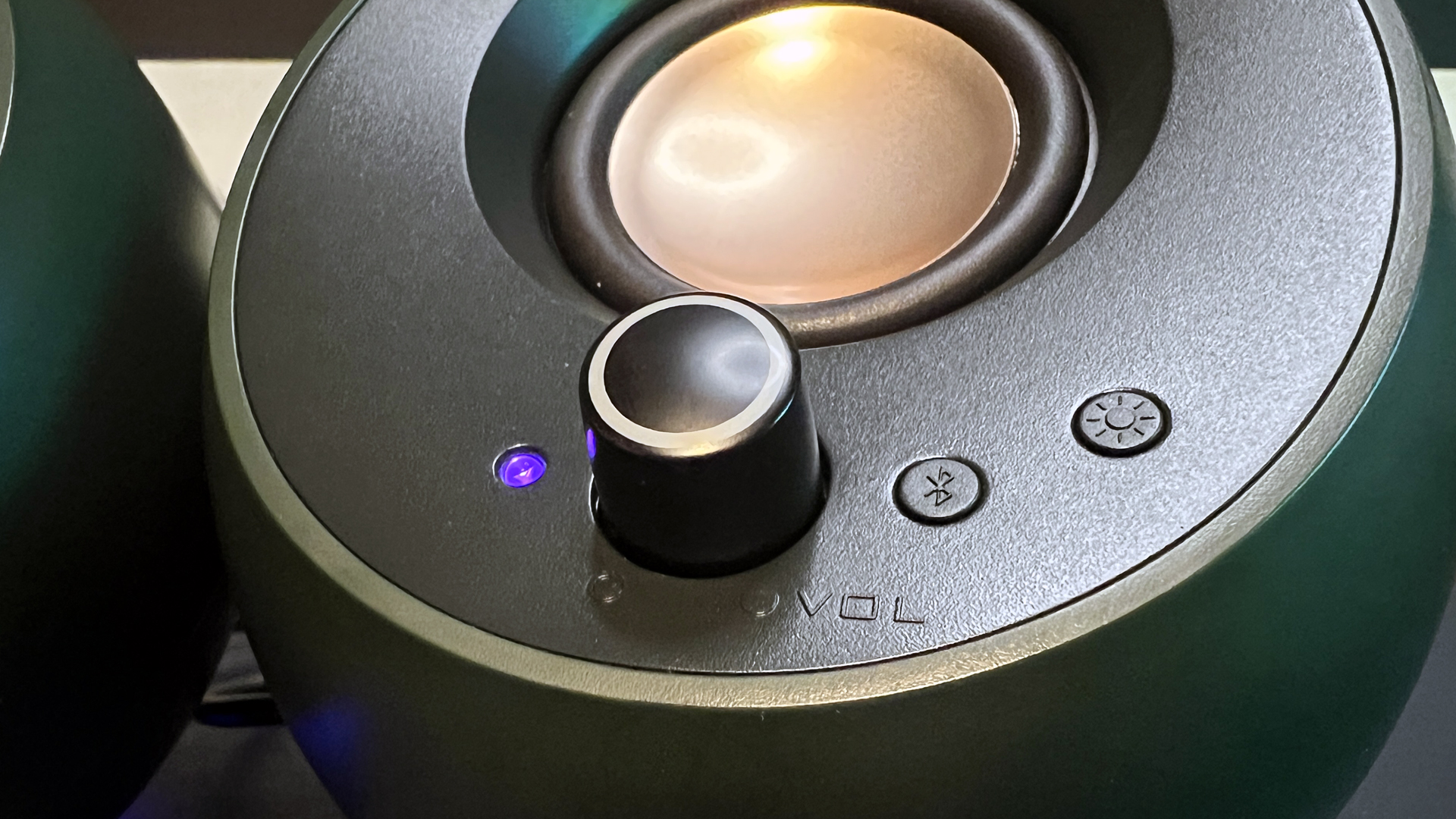
Both speakers are the same size and shape, and are connected via a hardwired 6-foot (1.8m) cable. The right speaker has three additional ports on its back: USB-C, USB-C PD (Power Delivery), and 3.5mm AUX-in. It also has two 3.5mm jacks on its right side for a headset and a microphone.
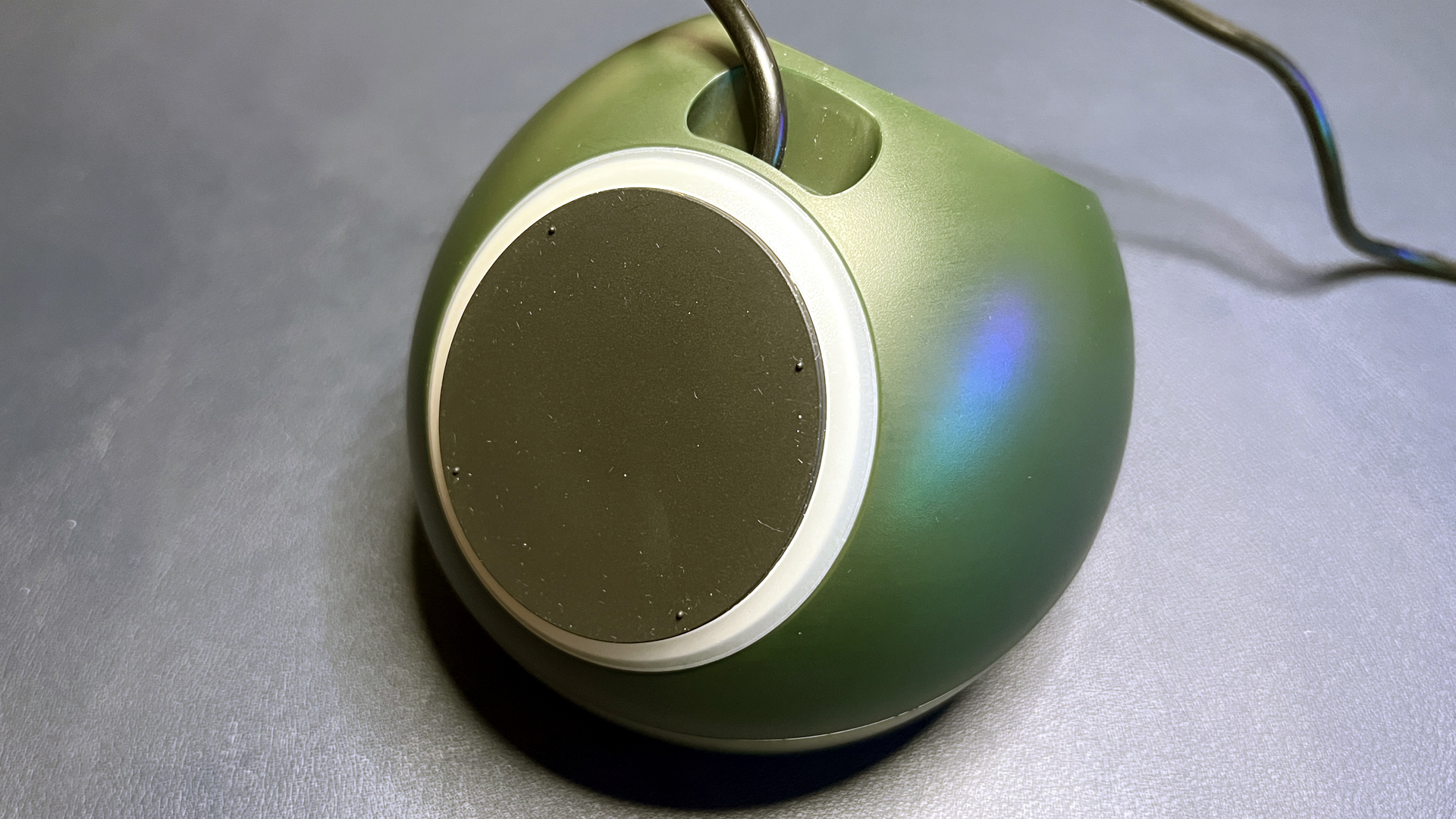
The bottom of each speaker is lined with rubbery anti-slip material, which wasn’t quite enough to stop the speakers from slipping on a wooden desktop — the cable that connects the two speakers is somewhat stiff out of the box, so it may need some training to get the speakers to sit where you want them. The speakers are relatively lightweight: the left speaker weighs 13.44oz (381g) and the right speaker weighs 14.88oz (422g). An RGB lighting strip circles the base of each speaker.
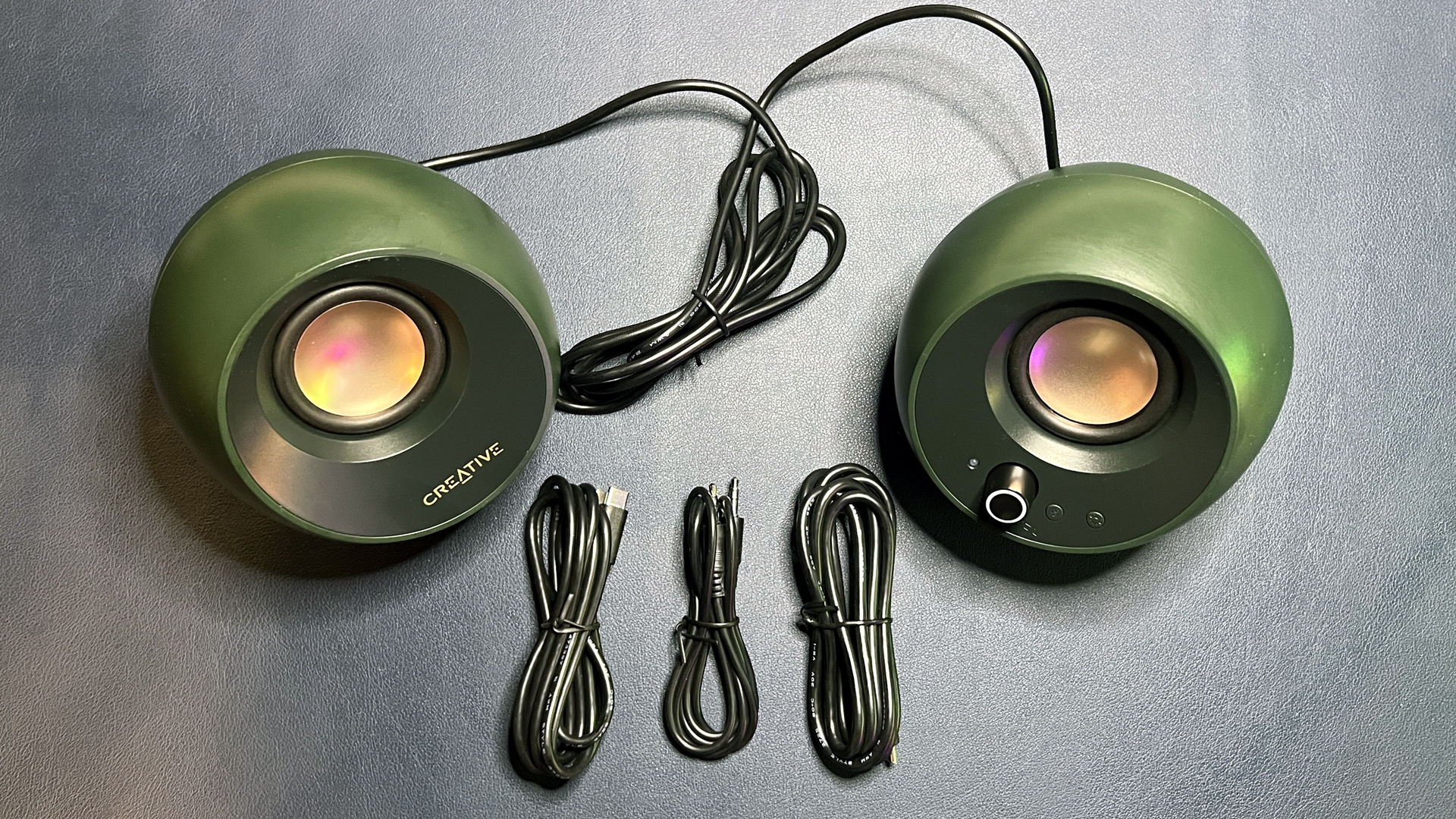
The Pebble Pro comes with three cables: a 5-foot (1.5m) USB-C to USB-C cable, a 5-foot (1.5m) USB-C to USB-A cable, and a 4-foot (1.2m) 3.5mm AUX cable. The system does not come with a power adapter, but Creative is currently including its 30W PD adapter as a free add-on if you buy the Pebble Pro directly from its website. The Pebble Pro is capable of 10W RMS output when connected to a regular USB port, and is capable of 30W RMS using the 30W PD adapter. This makes it a little more portable than most desktop speakers, as it doesn’t require power from a separate outlet.
Specs
Performance of the Pebble Pro
The Pebble Pro is a 2.0 dual-channel system with a left speaker and a right speaker. Each speaker has a 2.25-inch full-range driver on the front and a passive radiator on the back. The drivers are tilted up at a 45-degree angle, so the speakers can sit on your desktop and point at your ears. This angle isn’t adjustable and these speakers don’t seem particularly easy to fit into a generic stand, so keep this in mind if you’re looking for speakers that will sit somewhere other than your desktop.
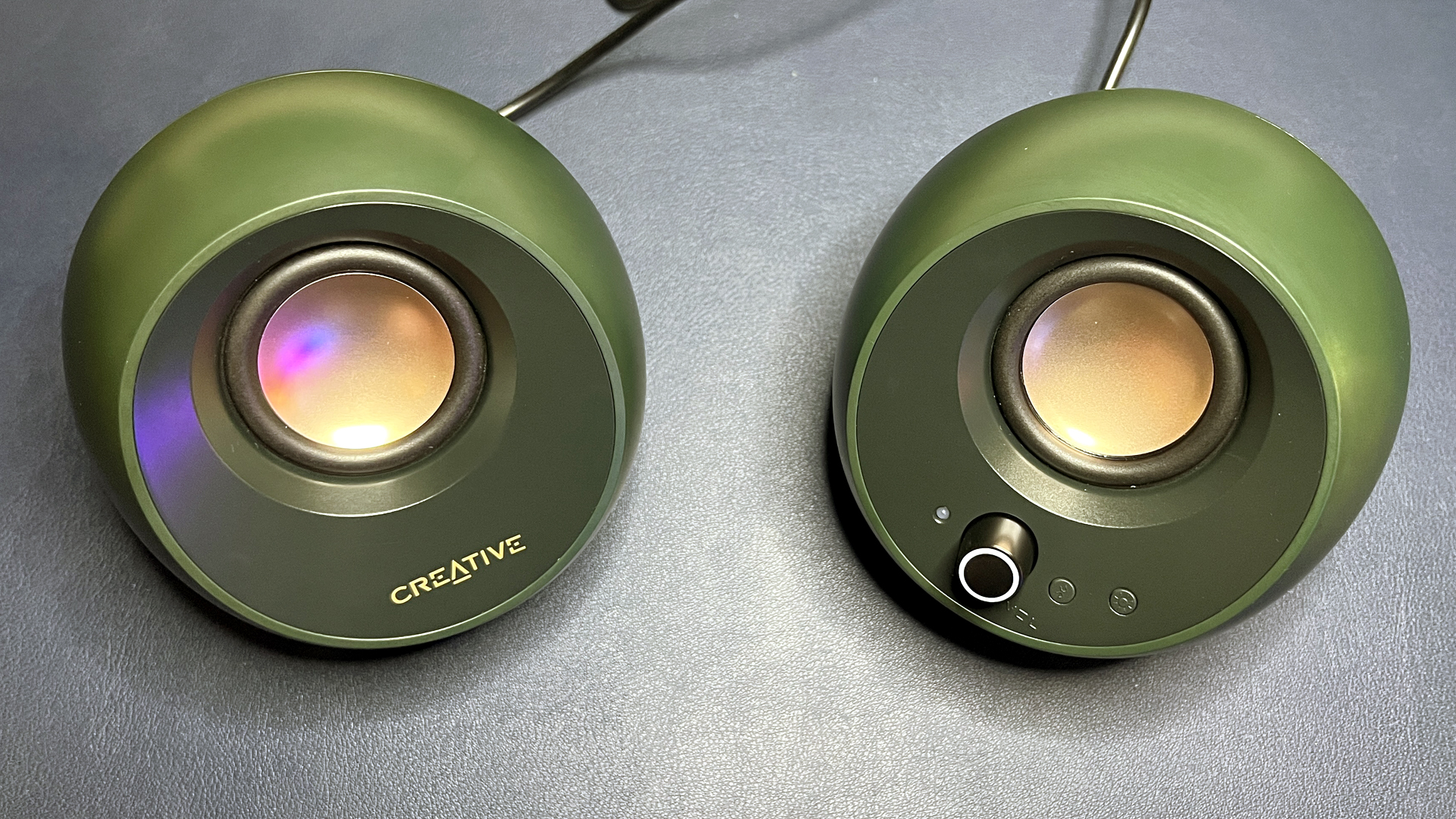
The Pebble Pro has a frequency response range of 80 Hz - 20,000 Hz and sounds very good for its price point. It delivers plenty of volume, even when it’s connected to a regular USB port (drawing up to 10W RMS), though you’ll get a noticeable boost by plugging in the 30W PD adapter. The Pebble Pro managed to hit a maximum of 69.4dBA (A-weighted decibels) at 50% volume, measured via a handheld sound level meter at 3.3 feet (1m), and a maximum of 88.2dBA at 100% volume. More importantly, the speakers still sounded decent at higher volumes — distortion didn’t start to become unbearably apparent until around 78% volume.
The Pebble Pro doesn’t have a separate subwoofer (nor does it have a port for one), but it managed to do a decent job of reproducing the pounding bass in Kaskade’s POW POW POW. However, songs with deeper, layered bass, such as Hans Zimmer’s Time, sounded compressed on the low end, and most of the nuance in the bass drum at the beginning of Lorde’s Royals was lost. It’s not a perfect system for bassheads, but you’ll get enough movement on the lower end for a dorm room party.
The Pebble Pro features Creative’s “Clear Dialog” audio processing, which is designed to enhance vocals over ambient sound effects in movies, shows, and games. I wouldn’t say vocals sounded particularly enhanced, but voices from all sources sounded very good on the Pebble Pro — clear, crisp, and full, even at lower volumes.
Features and Software of the Pebble Pro
The Pebble Pro has built-in RGB lighting around the base of each speaker. This lighting is configurable (-ish), but there’s no lighting-specific software — all configuration is performed on the speakers using the lighting button and volume knob on the right speaker. There are three lighting effects (four if you count “off”): “cycle,” “pulsate,” and “solo.” “Cycle” cycles through the spectrum of colors and has no additional settings; “pulsate” is a single color breathing effect; and “solo” is a solid single color.
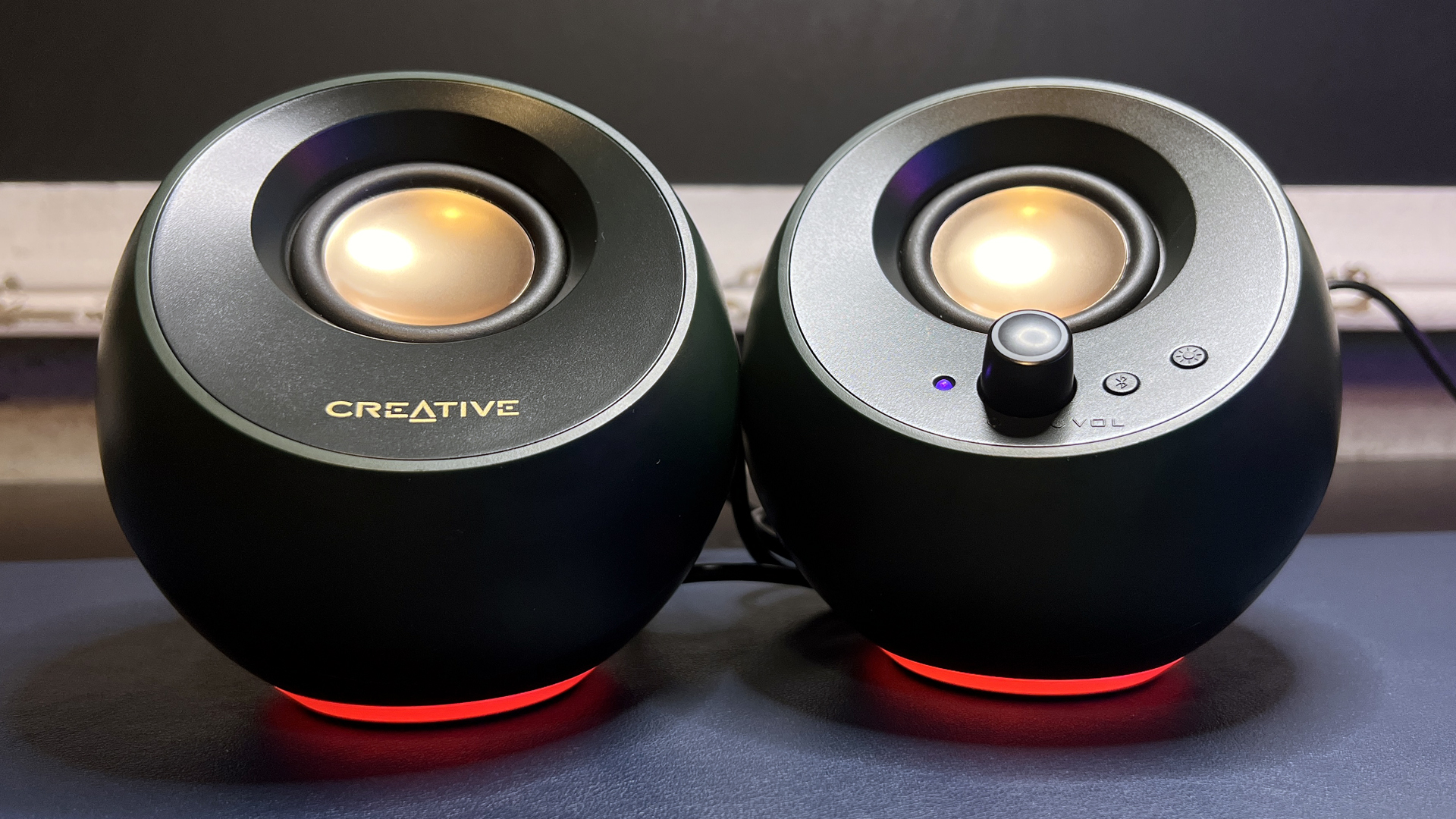
Pressing the lighting button once switches to the next lighting effect (cycle > pulsate > solo > off). In “pulsate” and “solo” modes, pressing and holding the lighting button for two seconds lets you enter color selection mode (the indicator light will turn cyan when you’re in color selection mode). You can then pick your desired color by rotating the volume knob. Once you’ve found a color you like, pressing the lighting button once more will exit color selection mode.
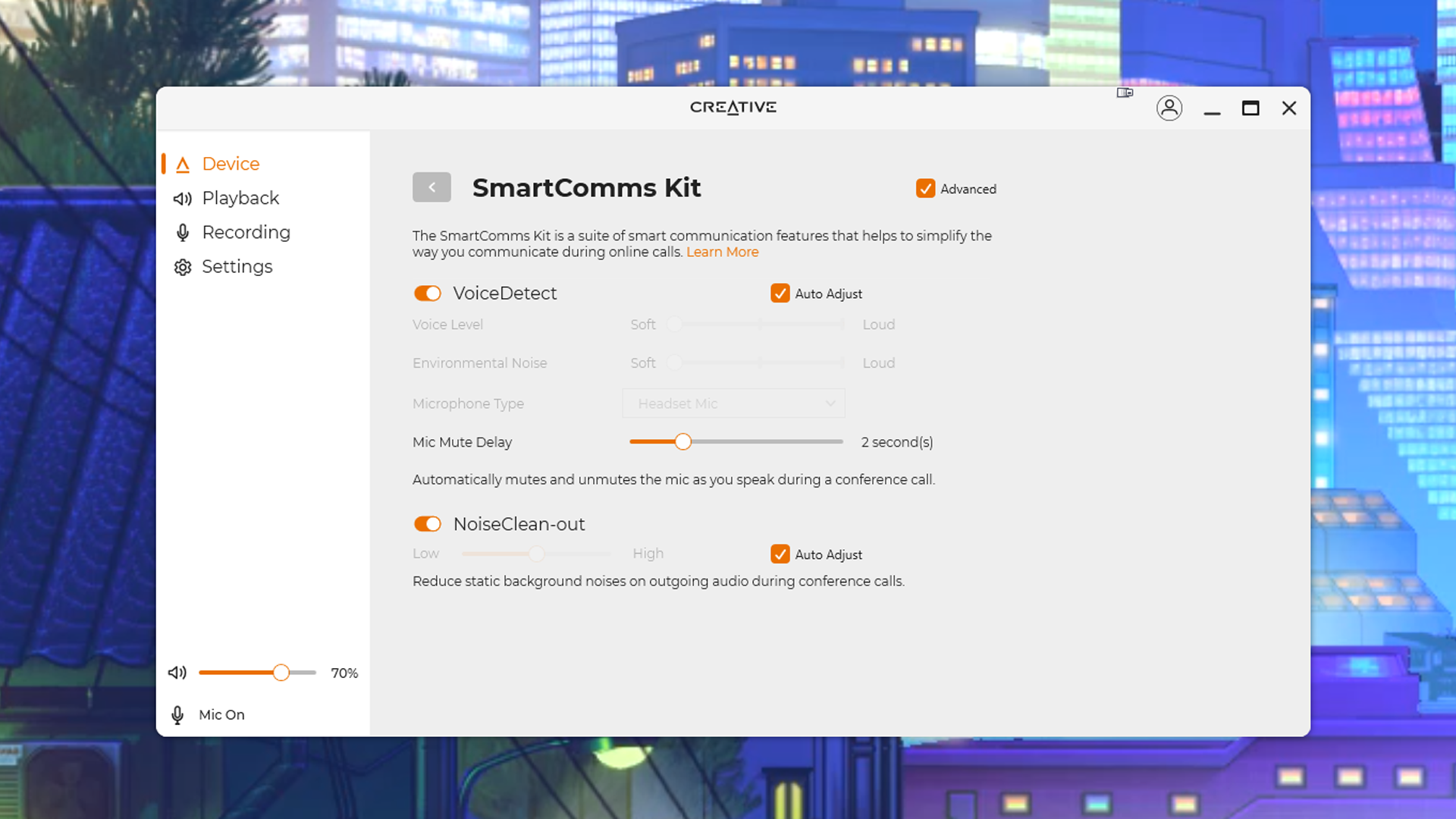
The Pebble Pro is also compatible with Creative’s SmartComms Kit, which is part of the Creative App (the Creative App isn’t useful for much else aside from updating the Pebble Pro’s firmware). If you plug a microphone into the Pebble Pro’s 3.5mm mic port, you can use the SmartComms Kit for some microphone processing — i.e. automatically muting/un-muting your mic during a call and cleaning up background noise such as PC fans or distant traffic.
Bottom Line
The Pebble Pro is definitely a step-up from the Pebble line-up with its re-designed drivers, added BassFlex and Clear Audio processing technology, and optional extra power input. I wasn’t particularly wooed by the RGB lighting, but at least it’s customizable and I’m sure many will appreciate the fun flashiness. This is a great compact desktop speaker setup that’s actually pretty portable — it can be powered solely by a standard USB port on a laptop, or it can be plugged into a 30W PD adapter for an extra kick in both audio quality and volume.
The Pebble Pro is an excellent budget desktop PC speaker option with great-sounding audio, clear vocals, and weighty bass. My only small complaint: there’s no subwoofer port (and there are a lot of ports) for those who want the option for even better bass.
MORE: Best PC Gaming Headsets
MORE: Best Gaming Keyboards
MORE: Best Gaming Mouse







